Vanguard: Saga of Heroes Profile Preview - The Druid, Monk, Necromancer, Paladin, Psionicist, Ranger, Rogue, Shaman, Sor
Learn about 10 of the character classes that you can play as in this upcoming massively multiplayer fantasy role-playing game by the creators of EverQuest.
The fantasy realm is a popular one for massively multiplayer role-playing games, as these magical settings let you play as a completely different race and do all sorts of heroic deeds, such as clearing out infested dungeons, slaying dragons, and generally killing everything hostile that stands in your way. With Vanguard: Saga of Heroes, Sony Online Entertainment and Sigil Games, which was founded by creators of the famed EverQuest, are preparing a whole new fantasy world to explore. And there are over a dozen character classes, or careers, that you can pursue in the game. In our previous preview we covered the first five, and now we present another 10 so you can study up and figure out what you want to play as when the game launches in January.
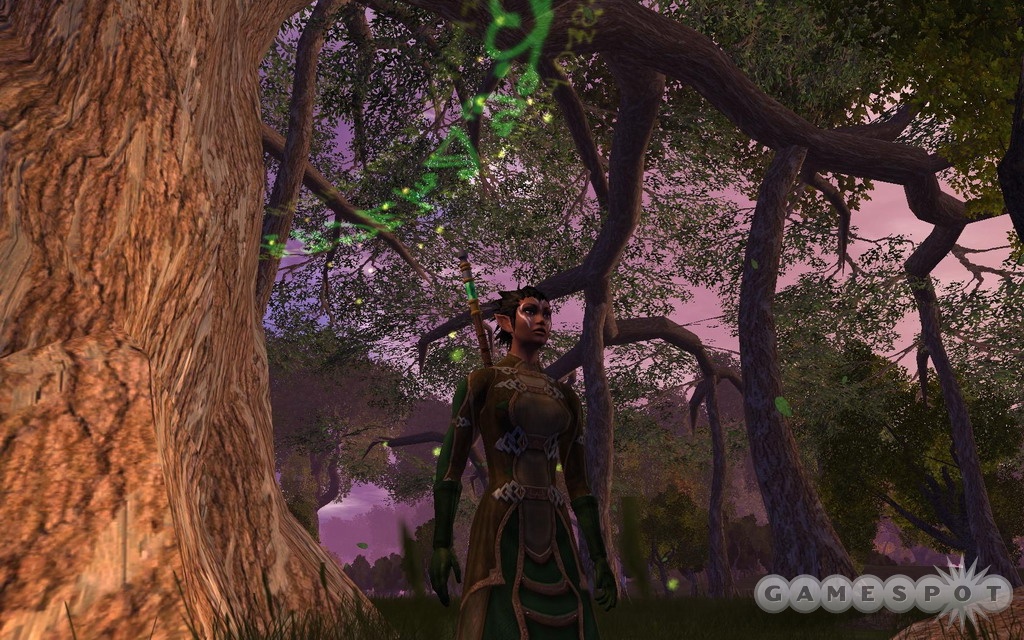
Druids
Druids are spellcasters who can tap into the natural world, specifically stone and storm magic. This means that the druid has plenty of ways to inflict damage to the enemy, as well as aid allies. Below are some of the offensive and defensive abilities of the druid class:Plague: The druid can use the plague to inflict physical damage to opponents over time. If used as a finishing move, the plague can inflict a lot more damage to a single opponent.
Lightning Strike: Calling upon the power of the storms, the druid can inflict arcane damage to opponents. And there's bonus damage if that opponent happens to be wet.
Okeli's Shield: This protective shield blocks incoming damage for the next two attacks.
Stifling Brambles: You can use these magical brambles to slow down opponents as well as inflict damage on them. It lasts for 36 seconds.
Phenomena are some of the most powerful spells that the druid, or any other class, can cast in the game. Phenomena are large, natural events, and they come in the form of a calamity or a wonder. Calamities are what you want to unleash on your opponents, and wonders are used to bolster your friends.
Lycanthropy: The druid and his or her allies can transform into wolves with this wonder. As a wolf, the druid has faster movement speed and damage. This wonder works better at night.
Summer's Flame: This calamity inflicts fire damage to your opponents, as well as lowers their armor class and attributes for 30 seconds, making them easier to kill.
Finally, druids can create elemental pets to assist them in battle. These pets come in storm and earth varieties. Storm pets are pretty obedient and will only attack when told, whereas earth pets will attack opponents on sight.
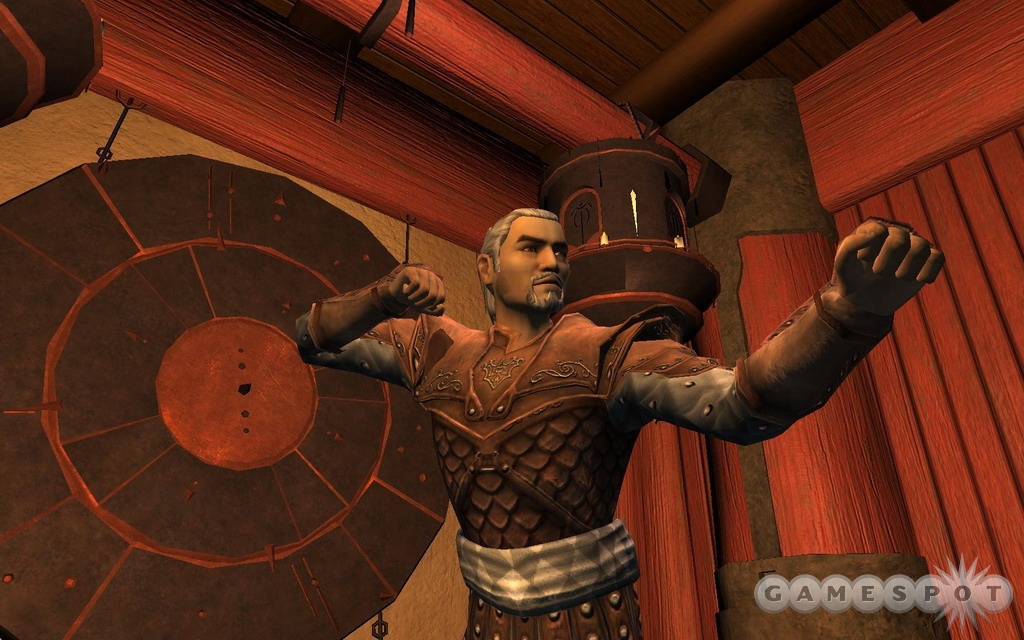
Monk
Monks are fierce warriors that specialize in martial arts combat. All monks have an inner focus, or a special pool of points that allows them to make their moves. Monks regenerate their inner focus by performing finishing moves on the enemy. More experienced monks will have a larger pool of points than inexperienced monks. Monks also choose to specialize in one of three martial arts styles:Dragon Style: The dragon style is the most offensive style, and it focuses on inflicting the maximum amount of area attack damage. A dragon monk is blessed with a higher armor class and the ability to inflict more melee damage than other monks. Dragon stances include the heavenly dragon and the stone dragon.
Harmonious Body Style: If the dragon style is a "hard" style, the harmonious style is a "soft" style. A harmonious body monk attacks the weak points of an opponent, slowly draining the effectiveness of those attacks while bolstering the monk's own. Harmonious body stances include the tiger and the crane.
Drunken Style: The drunken style is a mix of offense and evasion, and the drunken monk is a whirlwind of attack and counterattack. Drunken monks have certain mental immunities and resistances, and they are unimpeded by roots, snares, and knockdowns. Drunken styles include drunken fist and drunken sway.
All monks can gain special abilities through their choice of martial arts style, or they can unlock them as they increase in experience level. Below is a listing of some of the special abilities in the game.
Magnificent Drunken Stagger: This ability lets the monk move as fluidly as water, increasing the ability to dodge all attacks and allowing for a constant stream of counterattacks. This is restricted to drunken monks.
Sun Dragon's Corona: Available only to dragon monks, this special ability lets the monk radiate an intense amount of heat, burning anyone who attacks him or her.
Diamond Body: Available only to harmonious body monks, this ability makes the monk immune to disease and poison spells.
Vast Stride: Available to all monks, vast stride lets the monk teleport behind his or her target.
Nerve Strike: Available to all monks, nerve strike lets the monk stun an opponent from behind. This ability can only be used outside of combat.
Legendary Iron Skin: Available to all monks, this ability temporarily increases the monk's mitigation of and immunity to stun.
Necromancer
The necromancer is a spellcaster that specializes in death magic. In fact, necromancers can choose to take on the corporeal undead form of a skeleton, lich, or demi lich. Or, a necromancer can take on the incorporeal form of a wraith, spectre, or ghost. Necromancers can also return to their normal forms, though the transition does weaken the necromancer temporarily. 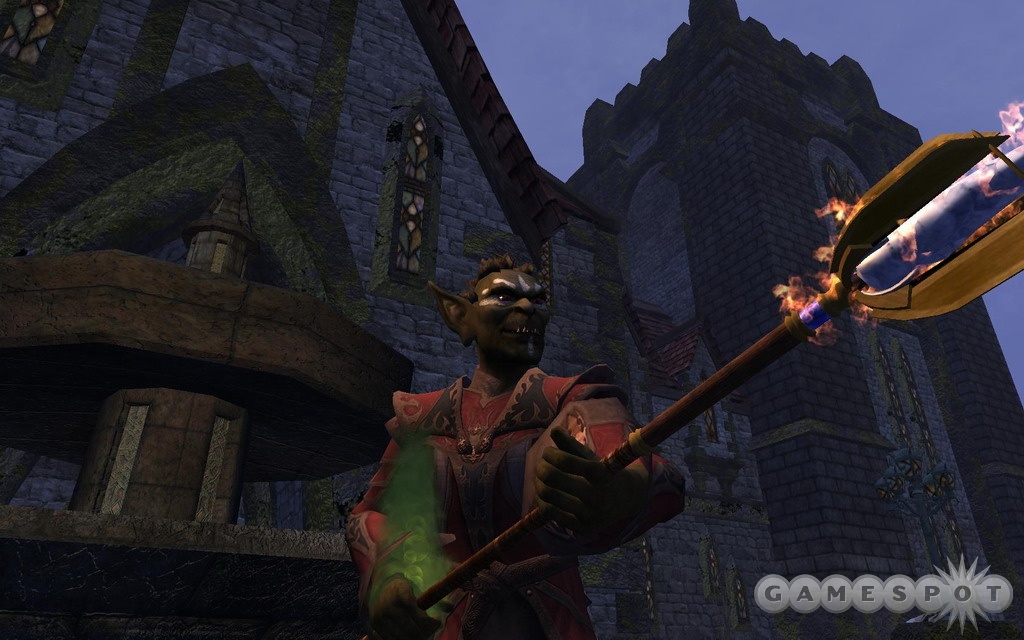
Necromancers can also summon abominations to serve as pets. The more powerful the necromancer is, the more powerful the abomination that he or she can summon, though the first abomination can be summoned at level 10. Abominations can also be equipped with special items called grafts. Like a customizable doll, the abomination can be outfitted with different claws, fists, legs, skin, brains, hearts, faces, and even souls. These grafts are salvaged using the necromancer's corpse harvest ability.
Many necromancer spells work only on corpses, and a corpse magic spell consumes a single corpse. Necromancers can also use corpse magic to raise minions, short duration pets that help the necromancer in battle. Higher-level necromancers will be able to summon more minions at any one time than lower-level necromancers.
Necromancers can also animate fallen foes to fight for him or her. These animations have less power than their living selves, and an animation counts against a necromancer's total number of minions.
Finally, necromancers can also cast curses and plagues. Curses are powerful spells that inflict large amounts of damage, but the key is that curses cannot work unless the target is inflicted with the plague first. Plagues are standard damage-over-time spells, and each plague spell has an associated curse.
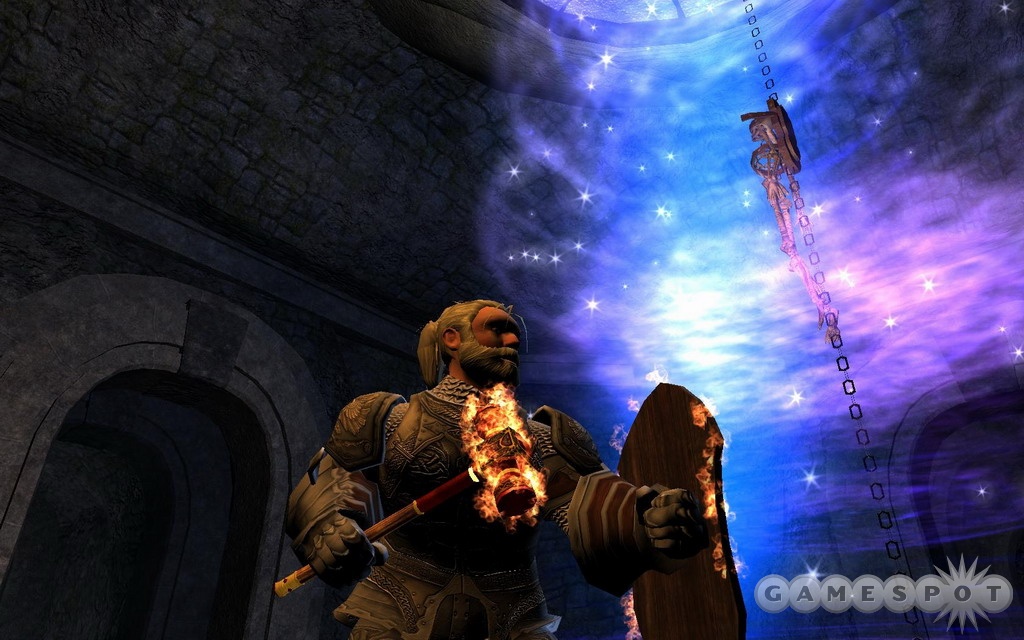
Paladin
Paladins are holy warriors of Athuloria, the goddess of law, judgment, and punishment. It goes without saying that paladins strive to enforce the law. Paladins are capable warriors blessed with minor godly powers. In addition, paladins have gifts of virtue, special abilities that tap into a paladin's virtue points. Gifts of virtue might increase the paladin's damage in combat, inflict heavy damage on the undead, or draw the attention of all nearby attackers, thus drawing them away from wounded allies.Paladins can also surround themselves with special auras that affect the paladin and nearby allies. These auras might increase the damage abilities for the group, increase health and energy regeneration, or protect the group from undead attacks. Only one aura can be active at a time.
As enforcers of the law, paladins can mete out judgments on a target. For instance, the judgment of the bloodthirsty causes the target to incur damage every time he or she attacks. Meanwhile, the judgment of the impure inflicts damage over time as the target is purified by fire.
Paladin special abilities include the war cry, which allows the paladin to inspire allies, and the healing touch, which lets the paladin heal. Paladins are also natural enemies of the undead and have special abilities geared toward destroying them.
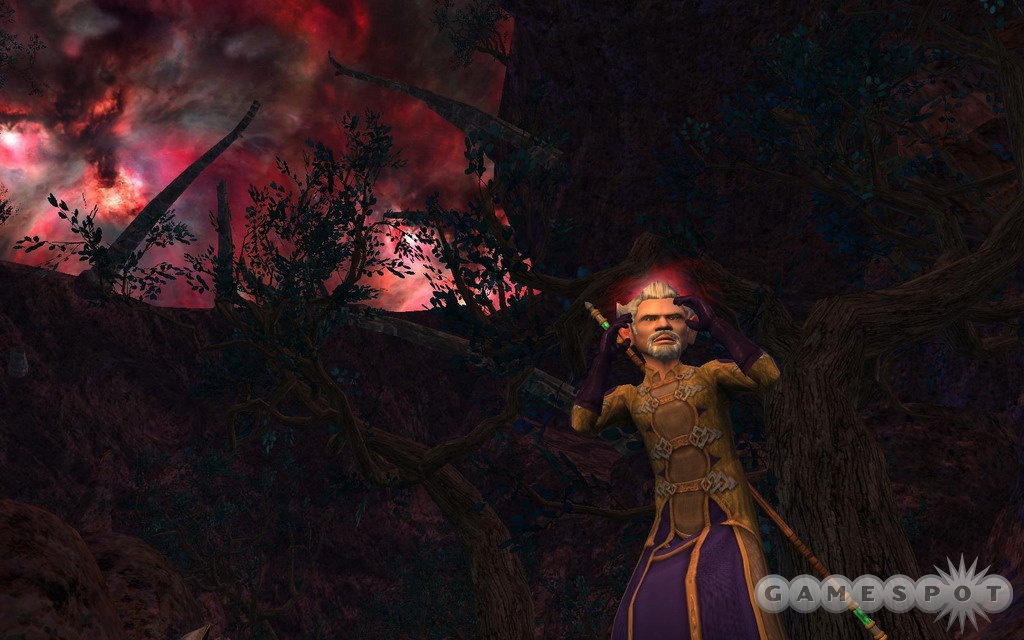
Psionicist
Instead of magic, psionicists wield powerful mental abilities that can be used to destroy, protect, or alter a target. Psionicists rely on mental disciplines known as concentrations to alter their minds and powers. As you might expect, a psionicist can focus on only one concentration at a time. The thought thief concentration powers don't inflict damage, but instead return energy to the psionicist's mind. The phrenic rage concentration boosts the damage that all powers inflict. Meanwhile, the astral form concentration lets the psionicist enter an intangible form.Psionicists can also control time to speed up an ally or slow down an opponent. The more powerful the psionicist, the greater the number of targets that can be affected by time manipulation. Other psionicist special abilities are listed below:
Simulacrum: The psionicist can summon an illusionary clone of his or her attacker. The attacker and his or her clone then fight each other. While the clone doesn't inflict damage, it can distract the attacker.
Charm: The psionicist can take control of the target's mind, thus making him or her a puppet.
Psionic Barrier: The psionicist can summon a temporary protective barrier around an ally.
Thought Pulse: The psionicist unleashes a powerful telekinetic attack.
Union of Thought: The psionicist can tap into a network of psionicist minds. Think of this as a telekinetic chat channel.
Illusions: The psionicist can appear to change into many different forms.
Ranger
Rangers are fighters who specialize in melee and ranged attacks, and this class is at home in nature. Like animals, rangers have special instincts that give them certain bonuses, and rangers can also tap into healing spells and poison cures. Rangers specialize in both melee and ranged attacks, and have an arsenal of special attacks at their disposal. Some of those are listed below: 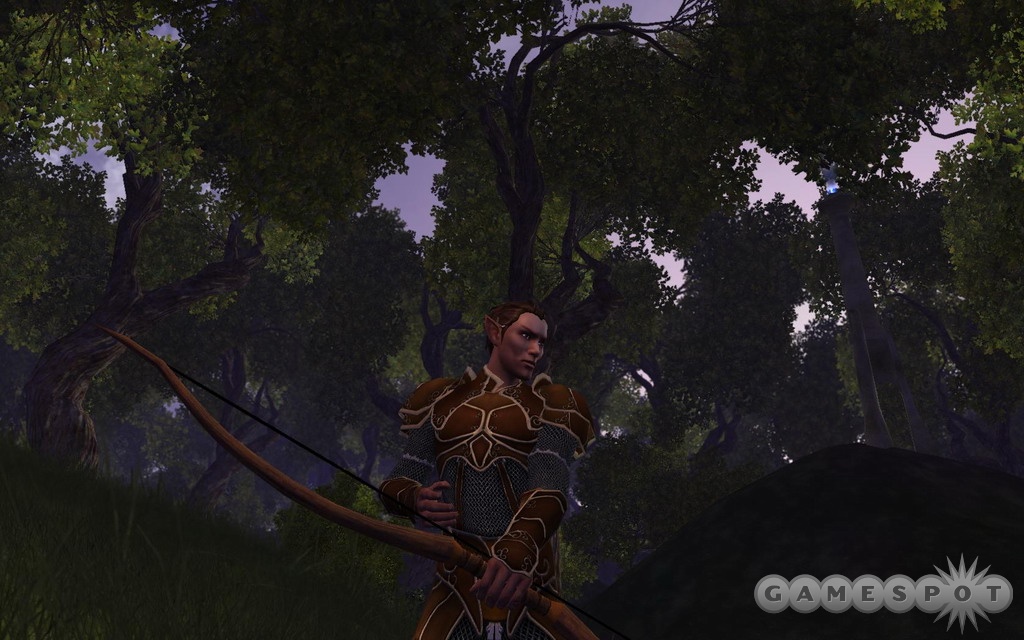
Windsong: This melee attack uses wind to enhance damage inflicted on the enemy.
Parry: This allows the ranger to parry, or deflect, an incoming attack.
Rancor: This counterattack lets the ranger damage an opponent. In addition, all allies also attacking the target gain bonuses. The rancor attack can be used only after a successful parry.
Debilitating Shot: This ranged attack deals special damage to the enemy, preventing them from casting spells and slowing them down. This can only be used out of combat.
Splitting Arrow: Splits an arrow into four, allowing the ranger to engage four opponents at once.
Rangers can tap into the natural energies of the land. These powers can be used to heal, as well as affect wild animals. For instance, a ranger can temporarily tame a creature, allowing them a brief amount of control. And the ranger's tiger talisman awakens the spirit of the tiger in the ranger, increasing melee damage and the chance for a critical attack.
Rangers also become fiercer the longer the fight drags on, as this awakens their fighting instincts. For instance, the form of aggression combat form allows the ranger to increase damage and accuracy, though at the cost of decreased ability to absorb damage. Rangers can also intercept an enemy attack on an ally, and this fuels the ranger's rage.
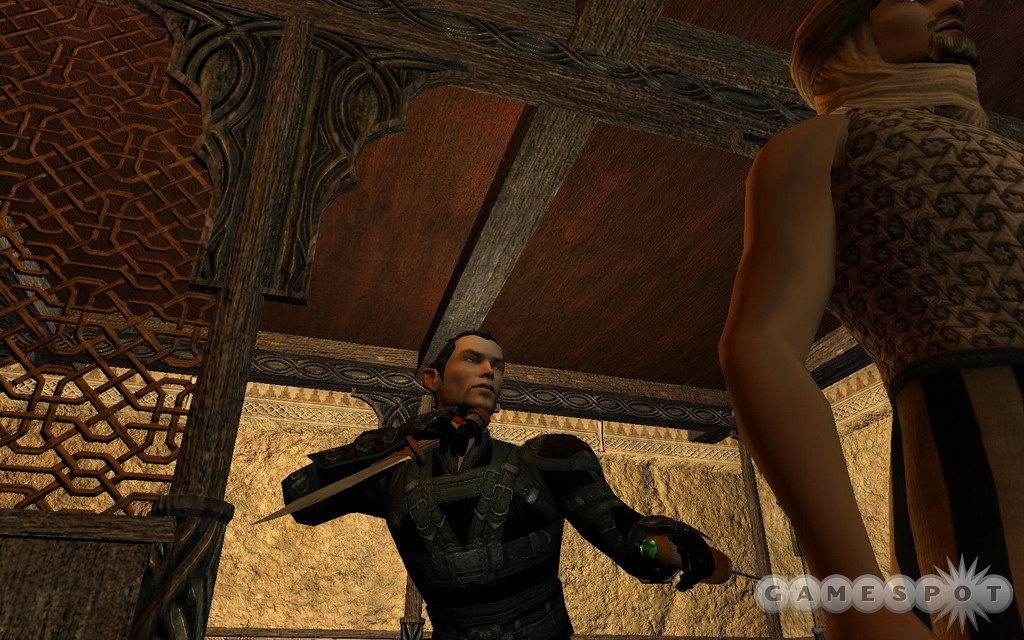
Rogue
The rogue is the thief of the game, always staying in the shadows and doing whatever is needed to win. Rogues can become virtually invisible in the game thanks to their stalking ability, and as long as a rogue doesn't attack, there's a good chance that he or she will remain undetected. The longer a rogue stalks, the more effective the rogue becomes, so if a rogue stalks an enemy for a lengthy period of time, it means that the rogue will deal more damage once he or she attacks.Being underhanded as they are, rogues also rely on poison to even the odds against more powerful opponents. Rogues can coat their weapons with poison, or use flechettes and blow darts to deliver poison from a distance. Flechettes actually explode, which allows the rogue to poison an entire group at once.
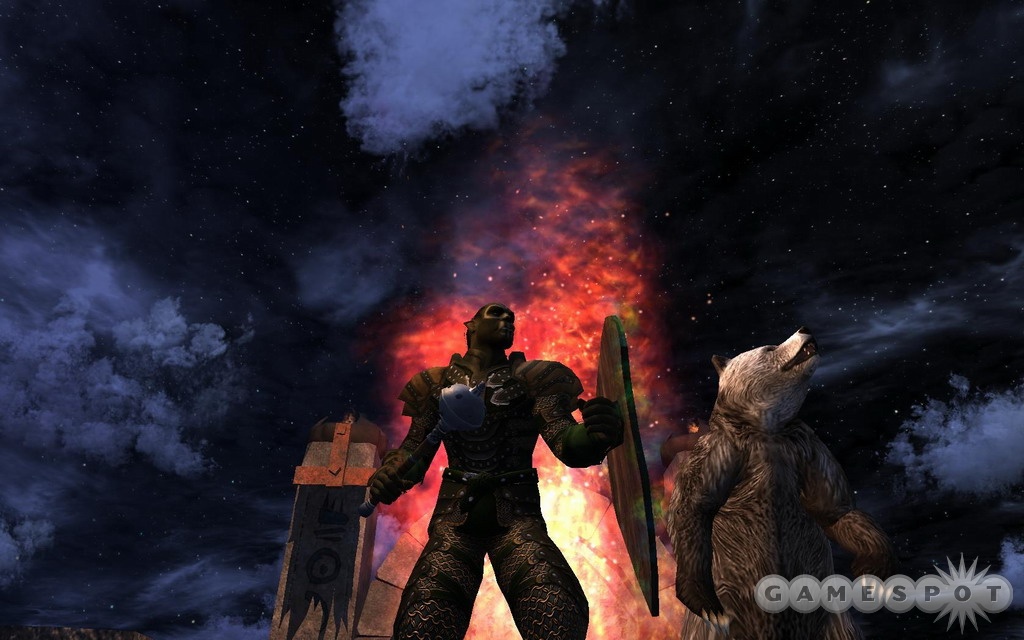
Shaman
Shamans are wise men and women who have special gifts and powers as a result of communing with the spirits. In fact, shamans choose a patron spirit. Tuurgin the Bear grants his devotees strength and toughness, whereas Rakurr the Wolf gives his devotees cunning and speed. Then there's Hayatet the Phoenix, who grants his devotees insight and fury of flames. Shamans can also transform into the image of their patron, though those who choose not to transform can call upon their patron to assist them, and the patron can send a servant.Shaman special powers are called totemic gifts, and a list of some of these abilities are below:
Frenzy: This gift lets the shaman fly into a rage, increasing damage as well as allowing the shaman to strike twice.
Deafening Roar: The shaman emits a deafening roar that damages the enemy and lowers the damage of their attacks by half for the next two attacks.
Fleet of Foot: This gift gives the shaman increased agility, dexterity, and avoidance. This also increases the speed of melee attacks.
Inner Sight: The mind of the shaman is affected, increasing mana and mana regeneration, which means the shaman can cast more spells, and faster.
Spirit Burst: The shaman can summon friendly spirits that attack nearby enemies.
There are also spirits that exist that are hostile to the shaman, though a shaman can form short-term bonds with these spirits. For instance, Krigus the Fly is the spirit of rot and disease; Shamadiz the Vulture is the spirit of carnage and war; and Nag-Suul is the spirit of poison.
Sorcerer
Sorcerers are magic users who can tap into the powerful, destructive arcane powers. As such, these are very much offensive spellcasters who can blast enemies with elemental energy, but they can also cast powerful shields. Below is a list of some of the sorcerer spells in the game: 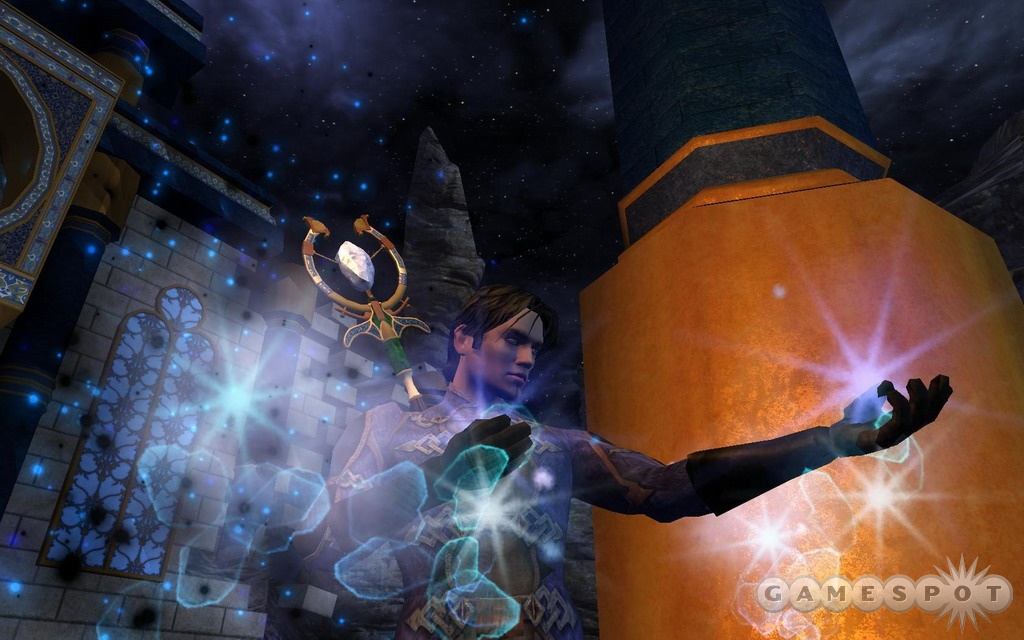
Fireball: The sorcerer hurls a giant fireball at the enemy, inflicting massive amounts of fire damage. The further the fireball has to fly, the more damage it inflicts.
Shocking Grasp: Electrocutes an opponent by touch, though this spell costs the sorcerer endurance.
Chaos Volley: A bolt of chaotic energy that inflicts arcane damage to the enemy, and a small amount to the sorcerer. This spell becomes more powerful with each successive cast.
Alteration: The sorcerer can alter opponents and allies alike.
Prismatic Shield: A sphere of colored light that deflects the first two incoming attacks. In addition, each attack may trigger a random effect, such as healing the sorcerer, doubling movement speed, or polymorphing the attacker.
Exhaustion: Drains an enemy, reducing speed and strength.
Sorcerers can also use combat forms to help channel an element better. This means the sorcerer will be more adept at casting spells of that element type. An example of this is rime skin, a form that lets the sorcerer channel cold energy better. This form lowers the cold resistance of enemies while also raising allies' fire resistance and giving them a cold damage shield.
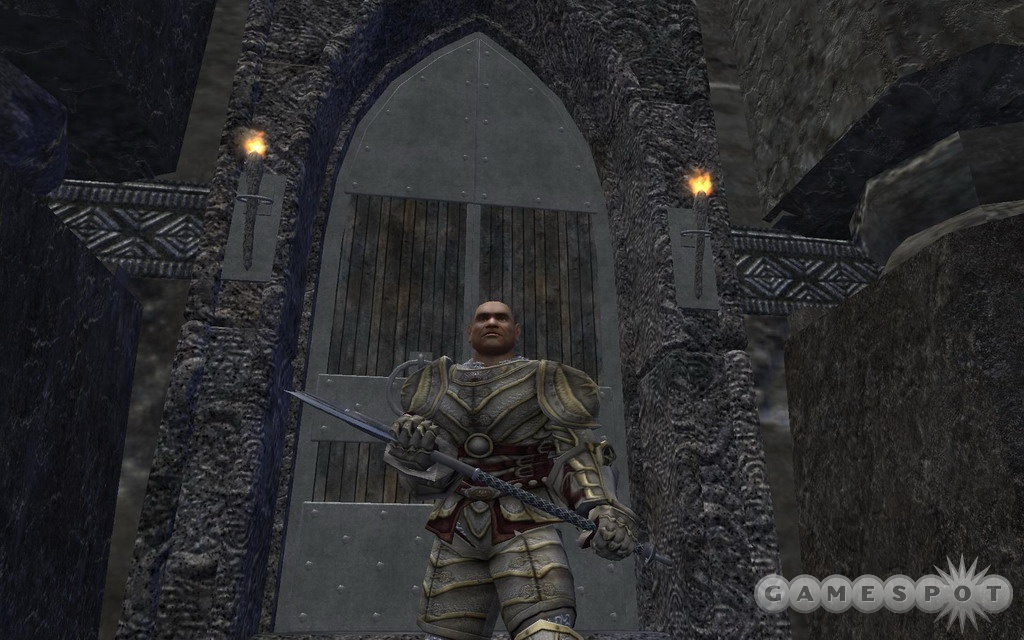
Warrior
The warrior is a pure fighter, relying on brute force to crush his or her foes. Warriors are usually found up front in a fight. Warriors have two stances available to them. The defensive stance allows the warrior to absorb more damage and perform attacks to keep the enemy's attention. The offensive stance lets the warrior use a two-handed weapon or a pair of weapons to inflict massive amounts of damage.Warriors are natural leaders, and they can issue commands to a target or an entire group. In addition, warriors have various abilities that they can unlock, a partial list of which follows:
Power Attack: The warrior greatly increases damage inflicted on the enemy.
Battle Cries: This battle cry can empower the warrior, draw the attention of nearby opponents, and even make an enemy stop in its tracks.
Rescues: If an ally is in trouble, the warrior can use this ability to rescue them by drawing the attention of the enemy.
Counterattacks: This can be used to damage or disarm an enemy with very little effort.
Brutal Strike: Available only under the offensive stance, this basic melee attack can be the first in a chain of attacks. It has a 5 percent chance to stun the enemy for three seconds.
Furious Blow: Available only under the offensive stance, this has a 15 percent chance to daze the enemy for 15 seconds.
Kick: Available only under the offensive stance, this has a 20 percent chance to interrupt the enemy.
Waylay: Available only under the offensive stance, this attack does moderate damage, but it's more effective when used from behind the enemy or in a group.
Rend Armor: Available only under the offensive stance, this reduces target mitigation by 30 percent for 12 seconds, at the cost of slightly reduced damage.
Whirldwind: Available only under the offensive stance, this attack hits all targets within a seven-meter radius, with a slight reduction in damage.
Taunting Strike: Available only under the defensive stance, this moderate attack generates a lot of hate in your enemy.
Adamant Foeman: Available only under the defensive stance, this ability requires a shield. This lets the warrior block the next two attacks, and increases mitigation by 50 percent for 10 seconds.
Shield Bash: Available only under the defensive stance, this ability requires a shield. A shield bash causes no damage, but it has a 65 percent chance to stun the enemy for three seconds.
Warriors can also chain together several different attacks into a sequence; the result is to inflict more damage than before. Warriors begin learning two-step chain attacks at level 4, and at level 30 they can learn finishing moves to create three-chain steps.
Got a news tip or want to contact us directly? Email news@gamespot.com
Join the conversation